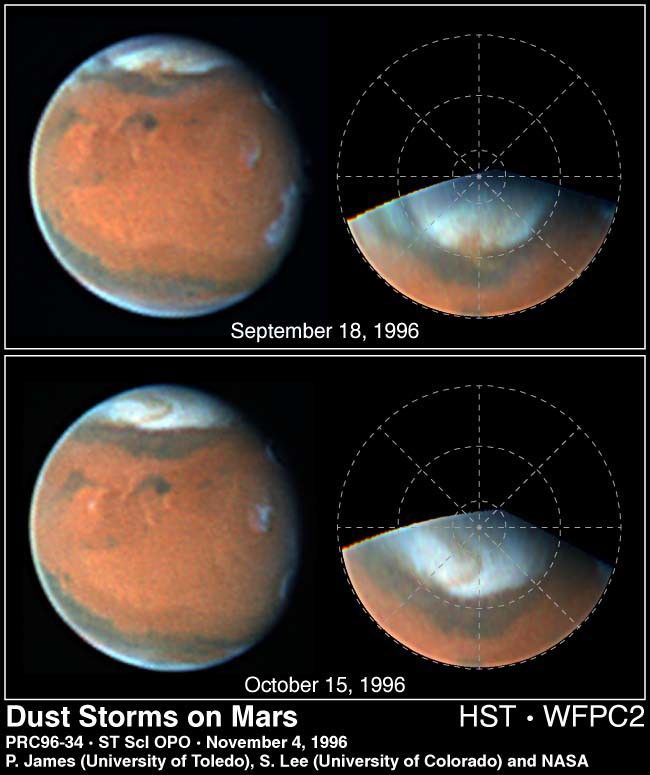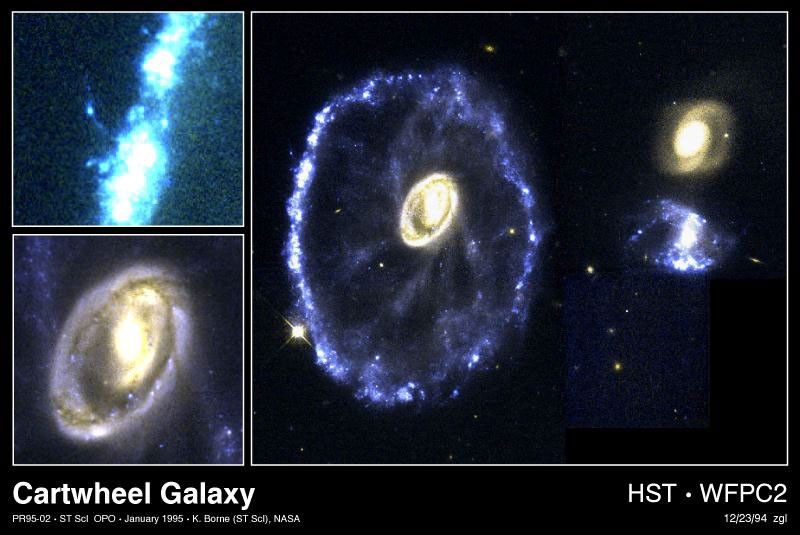1 min read
An Earth-Sized Storm on Saturn

- Object NameObject NameA name or catalog number that astronomers use to identify an astronomical object.Saturn
- Release DateNovember 29, 1995
- Science ReleaseHST’s Greatest Hits 1990-1995
- Credit
Related Images & Videos

Comet P/Shoemaker-Levy 9 Bombards Jupiter
Hubble followed unexpected and dramatic changes in Jupiter's atmosphere caused by collisions with comet fragments. The titanic blasts left Jupiter with a temporarily ``bruised'' appearance, caused by black debris that was tossed high above the giant planet's cloudtops. (Image...

Images of Spiral Galaxy M100 Before and After Hubble's First Servicing Mission
A majestic pinwheel formed by hundreds of billions of stars harbors rare pulsating stars that can yield clues to the size and age of the universe. The galaxy is so far away, Hubble sees it as it appeared at about the time dinosaurs roamed the Earth. (Image Released: January 1994)

Ring Around a Suspected Black Hole in Galaxy NGC 4261
The gravitational pull of a suspected super-massive black hole forms a frisbee-like disk of cool gas, at the core of an energetic galaxy. Subsequent Hubble observations of yet another active galaxy (M87) confirmed the reality of monstrous black holes - gravitational "sink holes"...

Planetary Nebula NGC 6543: Gaseous Cocoon Around a Dying Star
Mysterious stellar fireworks create expanding gas shells and blowtorch-like jets which form a spectacularly intricate and symmetrical structure. The nebula is a fossil record of the late stages of the star's evolution. (Image Released: January 1995)

Wispy Clouds, A Melting Ice Cap, and Dust-Storm-Free Surface on Mars
Wispy clouds, a melting polar ice cap, and a dust-storm free surface all indicate a cool, clear springtime in the Martian northern hemisphere. Hubble is serving as a weather satellite for studying the climate on other planets. (Image Released: February 1995)
Share
Details
Claire Andreoli
NASA’s Goddard Space Flight Center
Greenbelt, Maryland
claire.andreoli@nasa.gov

































